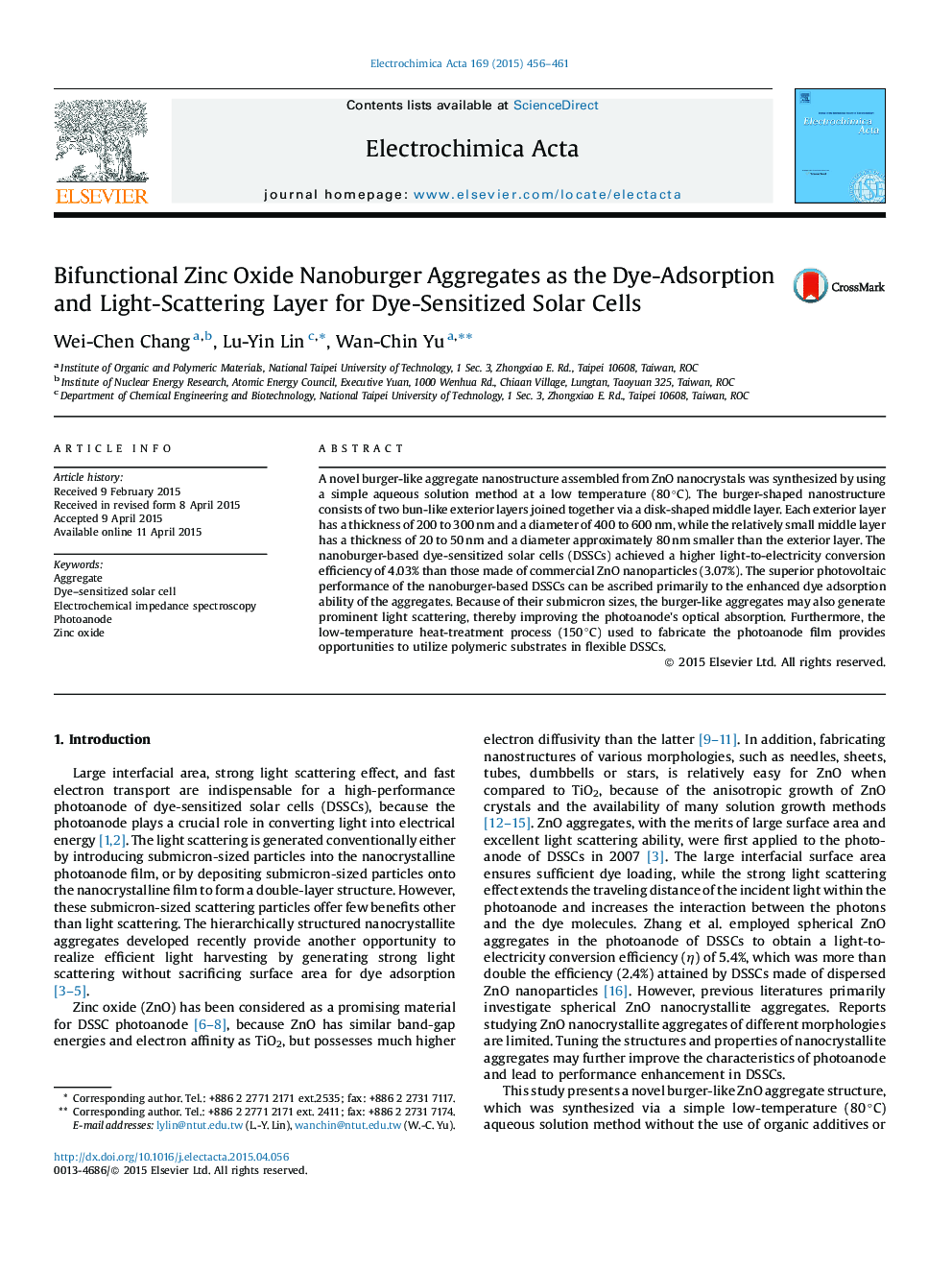| Article ID | Journal | Published Year | Pages | File Type |
|---|---|---|---|---|
| 184142 | Electrochimica Acta | 2015 | 6 Pages |
•Novel ZnO aggregate nanoburgers are made using a low temperature aqueous solution.•ZnO nanoburgersare formed with two burger bodies comprisesmall nanocrystalline.•ZnO nanoburgers have higher dye loading and better light scattering ability.•ZnO nanoburgers dye-sensitized solar cell attain a conversion efficiency of 4.03%.•Low temperature annealing (<150 °C) of ZnO film is benefit topolymeric substrate.
A novel burger-like aggregate nanostructure assembled from ZnO nanocrystals was synthesized by using a simple aqueous solution method at a low temperature (80 °C). The burger-shaped nanostructure consists of two bun-like exterior layers joined together via a disk-shaped middle layer. Each exterior layer has a thickness of 200 to 300 nm and a diameter of 400 to 600 nm, while the relatively small middle layer has a thickness of 20 to 50 nm and a diameter approximately 80 nm smaller than the exterior layer. The nanoburger-based dye-sensitized solar cells (DSSCs) achieved a higher light-to-electricity conversion efficiency of 4.03% than those made of commercial ZnO nanoparticles (3.07%). The superior photovoltaic performance of the nanoburger-based DSSCs can be ascribed primarily to the enhanced dye adsorption ability of the aggregates. Because of their submicron sizes, the burger-like aggregates may also generate prominent light scattering, thereby improving the photoanode's optical absorption. Furthermore, the low-temperature heat-treatment process (150 °C) used to fabricate the photoanode film provides opportunities to utilize polymeric substrates in flexible DSSCs.
Graphical abstractFigure optionsDownload full-size imageDownload as PowerPoint slide
